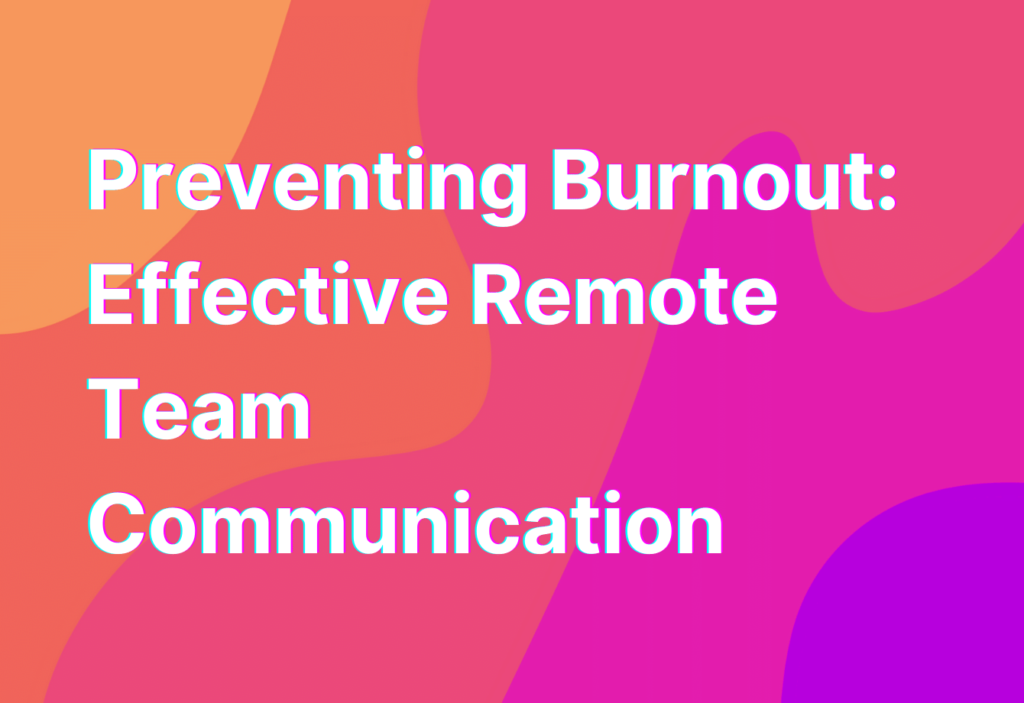Preventing Burnout: Effective Remote Team Communication
Hey there, remote workers! It’s Ashley, your friendly remote work advocate, here to chat about a topic that’s near and dear to my heart: preventing burnout. As someone who has been working remotely for the past 10 years as a marketing manager in the tech industry, I’ve seen firsthand how important effective communication is in keeping burnout at bay. So, let’s dive in and explore some strategies for maintaining a healthy work-life balance and preventing burnout in remote teams.
1. Set Clear Expectations
One of the biggest challenges in remote work is the lack of face-to-face interaction. Without the ability to read body language or have impromptu conversations at the water cooler, it’s crucial to set clear expectations for communication. Make sure everyone on your team knows when and how to reach each other, whether it’s through email, instant messaging, or video calls. By establishing these guidelines upfront, you can avoid misunderstandings and ensure that everyone is on the same page.
2. Foster a Culture of Open Communication
Communication is a two-way street, and it’s important to create an environment where team members feel comfortable speaking up and sharing their thoughts and concerns. Encourage open dialogue and active participation in team meetings and discussions. Remember, remote work doesn’t mean you have to sacrifice collaboration and teamwork. Tools like Trello, Slack, and Zoom can help facilitate communication and keep everyone connected, no matter where they are.
3. Schedule Regular Check-Ins
Working remotely can sometimes feel isolating, so it’s essential to schedule regular check-ins with your team. These can be one-on-one meetings or group video calls, depending on the size of your team. Use this time to catch up, discuss ongoing projects, and address any challenges or concerns. Regular check-ins not only help keep everyone accountable but also provide an opportunity for team members to connect on a personal level, fostering a sense of camaraderie and support.
4. Encourage Work-Life Balance
One of the biggest perks of remote work is the flexibility it offers. However, this flexibility can also blur the lines between work and personal life, leading to burnout. Encourage your team members to establish boundaries and prioritize self-care. Remind them to take breaks, step away from their screens, and engage in activities that help them recharge. By promoting work-life balance, you can help prevent burnout and create a healthier, happier remote team.
5. Embrace Cross-Functional Collaboration
Remote work often involves collaborating with colleagues from different departments or even different time zones. Embrace this cross-functional collaboration as an opportunity to learn and grow. By working with individuals from diverse backgrounds and skill sets, you can gain new perspectives and insights. Plus, it’s a great way to break the monotony and keep things interesting. If you want to learn more about effective communication strategies for remote cross-functional teams, check out this link.
Wrapping Up
Preventing burnout in remote teams is all about effective communication. By setting clear expectations, fostering open dialogue, scheduling regular check-ins, encouraging work-life balance, and embracing cross-functional collaboration, you can create a supportive and productive remote work environment. Remember, remote work doesn’t have to be isolating or overwhelming. With the right communication strategies in place, you and your team can thrive and avoid burnout. Stay connected, stay engaged, and keep those virtual water cooler conversations flowing!


